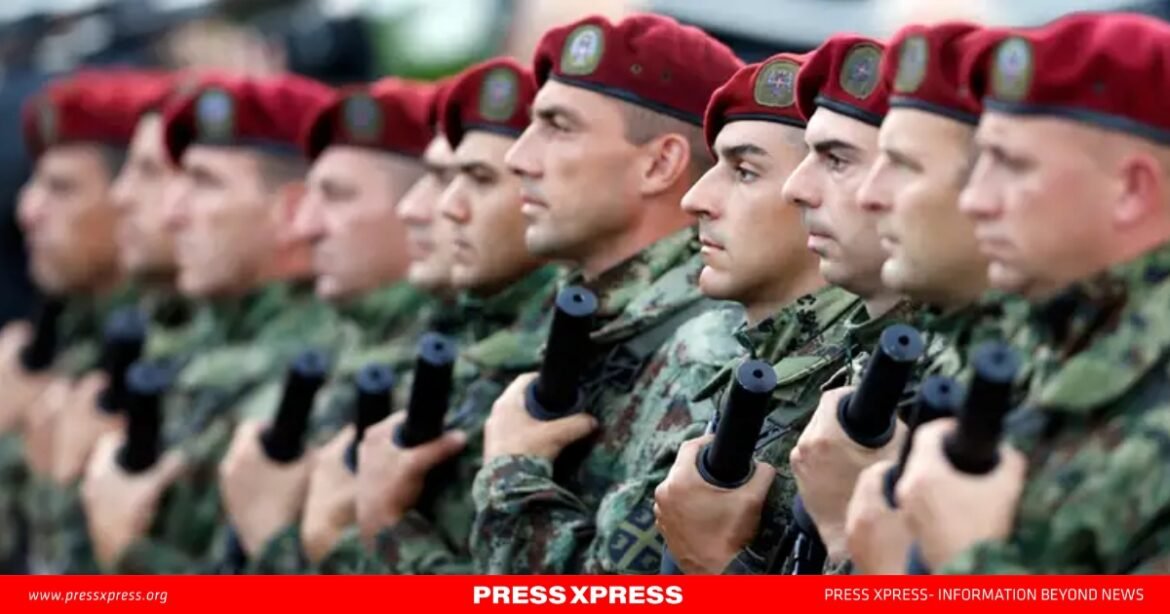Historically a region of war and bloodshed, the Balkans once again feel a rise in tension between Serbia and Croatia with an ongoing arms race. Recently completed and forthcoming purchases of the armed forces have made both sides warn about the prospect of regional destabilization akin to previous conflicts.
Modernization of Serbia’s Military
The military arsenal of Serbia is being modernized by buying off different arms and weapons from several suppliers comprising the US, China, Russia, France, and Israel. Only recently, its $335-million deal with Israeli firm Elbit Systems underlined this modernizing effort. It also purchased PULS – Precise and Universal Launching System-artillery system and Hermes 900 MALE reconnaissance drones, which enhance the Serbia’s defense and surveillance capabilities.
While PULS allows modular, multi-caliber capabilities, the chance for Serbia to launch rockets in various ways opens up. It is designed to be slotted into existing command networks-just another example of the emphasis Serbia puts on technological superiority. Hermes 900 MALE/HALE MA RPAS can stay up for 36 hours while operational over 1,000 kilometers and gives advanced intelligence, surveillance, and reconnaissance capacity.
However, these acquisitions are not an isolated advancement but part of broader regional competition, especially with Croatia.
Croatia’s Military Investments
Croatia has also pursued far-reaching military advancements that include the acquisition of the U.S. HIMARS system, known for being quite precise with far-reaching views in artillery functions—a parallel to Serbia’s current procurement of the PULS system, testifying to the game of tit for tat in the neighborhood.
Moreover, there is a historic setting against which all this confrontation of the Balkans war happens. Disputes between Serbia and Croatia started during Yugoslavian wars back in the 1990s. During the process, some territories were fought for by the Serbian forces engaged with a clash of ethnic rivalries, so all these clashes contributed to their longstanding foreign-policy stress. Physical wars have stopped ever since; how long the latest accumulation of defense could stand or make such conflict burst remains very unclear.
The Geopolitical Dimension
Beyond bilateral tensions, Serbia’s arms diversification highlights complex geopolitical alignments. Serbia’s defense acquisitions include Russian MiG-29 fighters and Pantsir air defense systems, Chinese FK-3 air defense systems, and Western equipment like French Dassault Rafale fighters and U.S. Humvee vehicles. This multi-source procurement reflects Serbia’s balancing act between historical ties with Russia, growing partnerships with China, and renewed defense engagements with the West.
Croatia, by contrast, has more closely aligned with NATO and Western defense strategies, emphasizing U.S. and EU partnerships. This divergence in alliances further exacerbates regional complexities, as Serbia’s non-NATO stance and its cooperation with Russia and China introduce a broader geopolitical rivalry into the Balkans.
Risks of Regional Destabilization
The ongoing arms race between Serbia and Croatia poses significant risks of destabilization in the Balkans. Key concerns include:
Escalation of Hostilities: The procurement of advanced weaponry on both sides raises the likelihood of miscalculation and military confrontations, even if unintentional.
Proxy Influence: Serbia’s diverse acquisitions from Russia, China, and Israel reflect the involvement of global powers in Balkan security dynamics, potentially turning the region into a proxy battleground.
Historical Tensions: The unresolved disputes from the Yugoslav wars, including the Kosovo issue, fuel underlying animosities that could resurface amid heightened militarization.
Arms Race Spiral: As both nations seek parity in military strength, further defense acquisitions could perpetuate an arms buildup with no clear de-escalation mechanism.
Conclusion
To prevent regional instability, diplomatic efforts must prioritize de-escalation and arms control measures in the Balkans. Initiating bilateral dialogues focused on transparency in military acquisitions and doctrines can help build confidence between Serbia and Croatia. Strengthening regional security frameworks, such as those under the EU and OSCE, is essential to promoting cooperative security and preventing conflict. Additionally, encouraging both nations to focus on defensive rather than offensive military capabilities could reduce the risks of escalation.
By addressing historical grievances and the current defense competition with proactive diplomacy, the Balkans can avoid a resurgence of conflict and work towards lasting regional stability.


